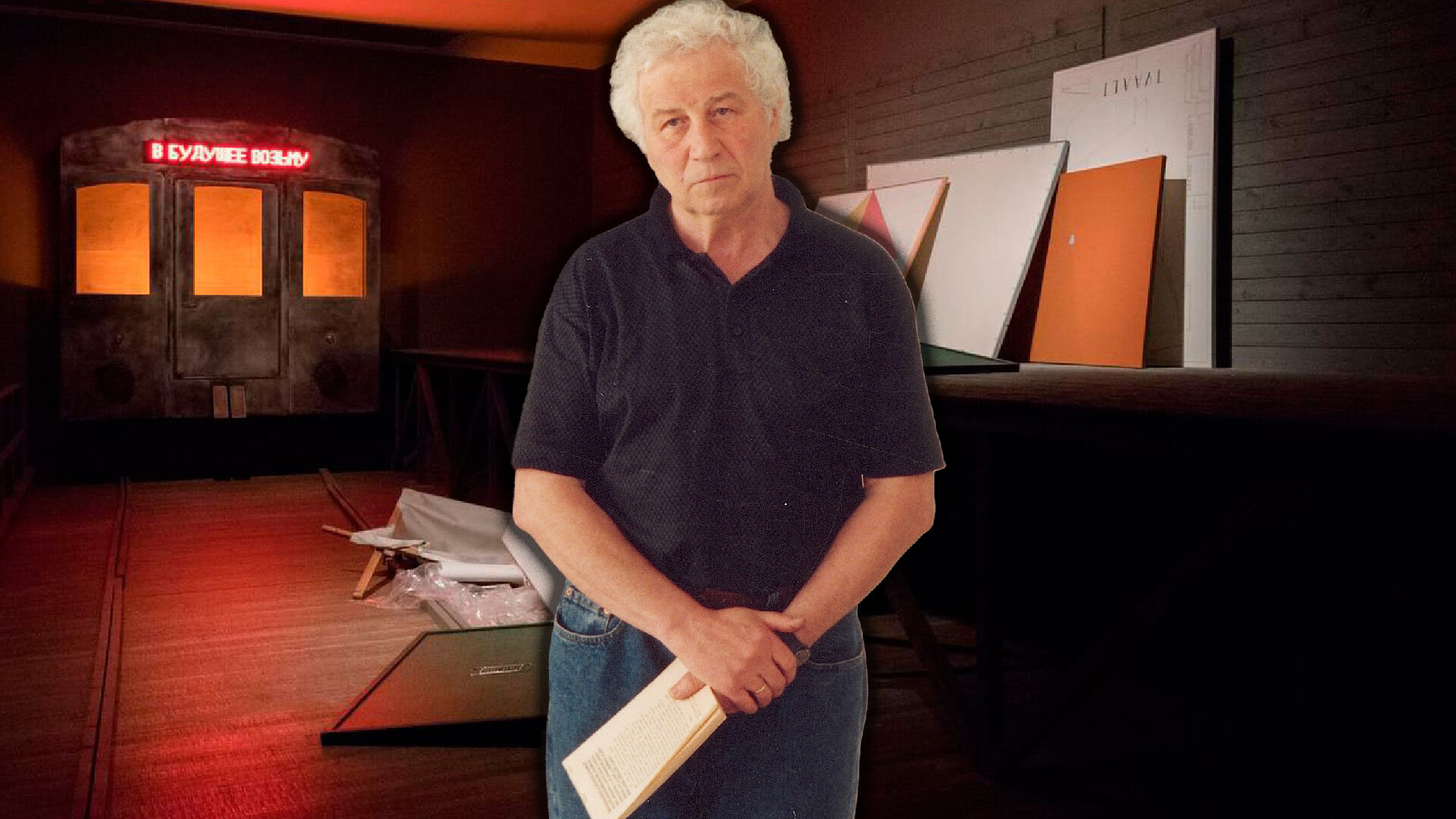

Kabakov crossed paths with art during World War II: as he found himself evacuated to Samarkand, he started taking classes at the Leningrad Institute of Painting, Sculpture and Architecture, which had also been temporarily moved to Uzbekistan. In 1944, he followed it to Sergiev Posad and then entered a Moscow art school and lived in its boarding house from when he was 12 to the moment he was admitted into the Moscow State Academic Art Institute named after V. N. Surikov.
In search of his own language, Kabakov deconstructed classic images. That’s how ‘The Boy’ appeared – the interpretation of the image of the Vitruvian Man and a wicked metaphor for standardized representations. It’s not a coincidence that Kabakov, describing his painting, said: “The painting has the shape of a model…”
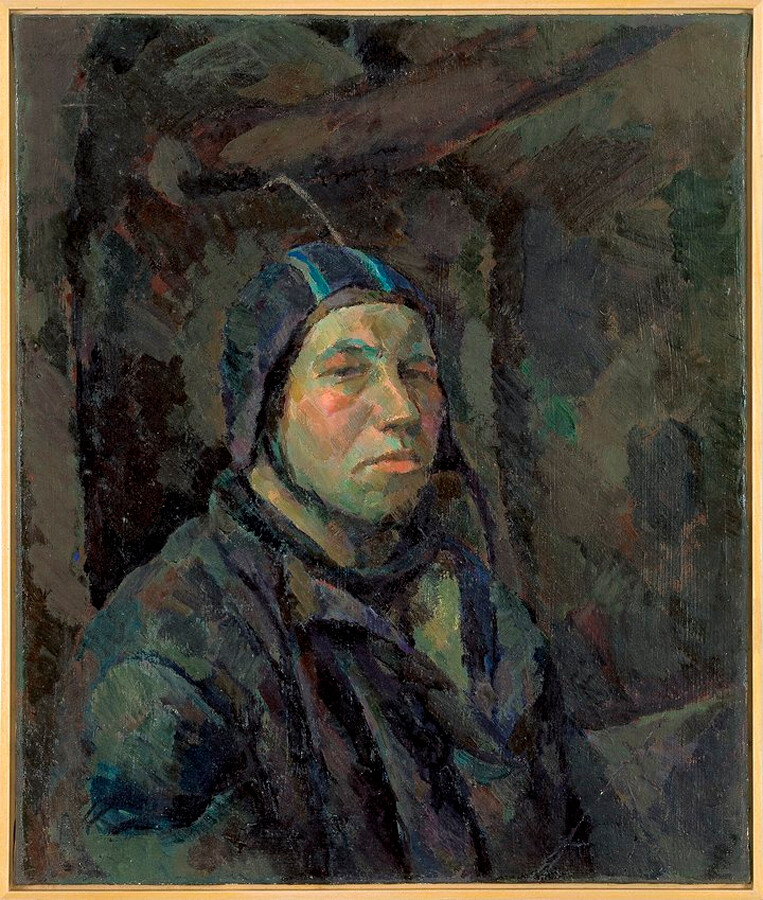
During his studies at the institute, he took classes from Robert Falk – Kabakov described the classes at his workshop as a “contact with the Great Art”. The early works of the artist were created under the influence of the art style of his mentor, including his self-portrait in a ski cap. This painting became the last the artist painted in the classic manner.

Graduating from the department of graphics, Kabakov worked on illustrations for books and magazines. Children’s magazines ‘Murzilka’ and ‘Funny Pictures’, popular at the time, as well as a lot of fairy tales and educational literature, were released with the artist’s design work. His career as an illustrator continued for thirty years: in this time, he created visual images for 150 books. Although, as he himself confessed, he didn’t like producing children’s illustrations, but he knew well how to imitate them.
Parallel to this, he studied painting for himself, creating works that were fundamentally different from the norm. Among such experiments – ‘The Shower’ series. This series was one of the first where the unique artistic vision of Kabakov manifested. He started working on it in the middle of the 1960s: in 1965, ‘The Shower’ was shown at the ‘Alternative Reality II’ exhibition in Italy, neighboring the works of René Magritte and David Hockney. It was not approved in the USSR, where ‘The Shower’ was considered sedition - the series allegedly portrayed the poverty of the Soviet people. However, through it, the West discovered the name of the Soviet artist.

At the end of the 1960s, Kabakov, along with artist Ülo Sooster, converted the attic of a house on Sretensky Boulevard in Moscow into a workshop. Soon, the inhabitants of the old Moscow districts – Kabakov, Bulatov, Viktor Pivovarov, Eduard Steinberg and Vladimir Yankilevsky – received the nickname ‘Sretensky Boulevard School’. During that time, Kabakov began to use text more and more frequently in his works – this led to the creation of the figurative painting ‘The Beetle’, featuring a poem from a children’s book that the artist had once illustrated. The insect, depicted sitting on a leaf – “perfect for my collection” – was painted with oil on plywood. In 2008, the painting was sold at the Phillips de Pury auction for a record-breaking $5.84 million.
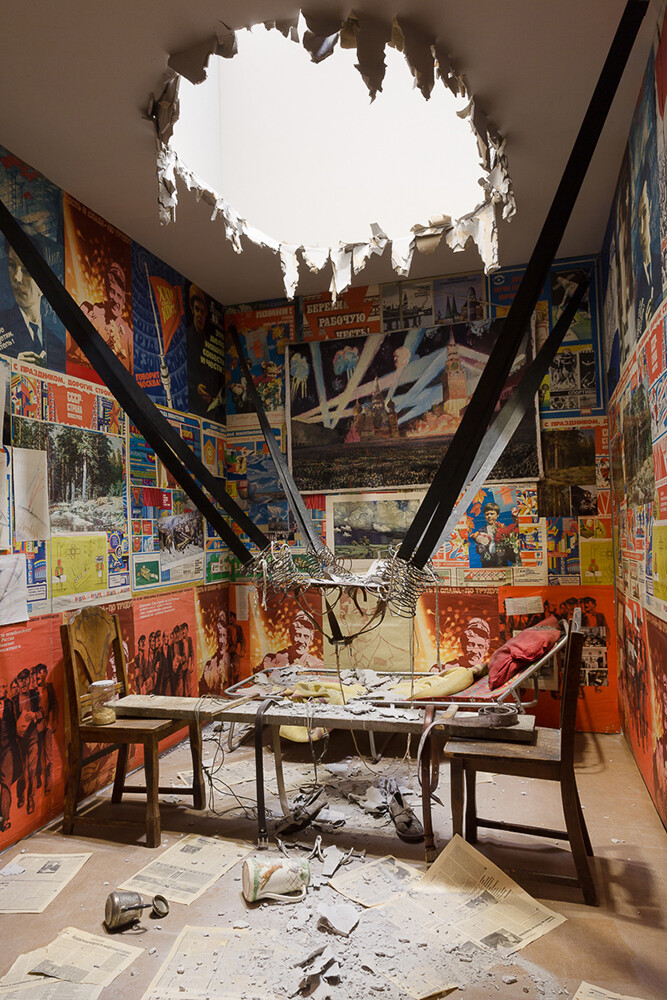
The 1980s became the time for grand-scale experiments for Kabakov. European museums wanted to organize his personal exhibitions. But the artist couldn’t bring out the required amount of his works, so he took a risky step: he wrote a guide for creating their copies. And the exhibitions were opened as planned.
At the same time, he began working on installations at his workshop on Moscow's Sretensky Boulevard, which looked like decorations for someone’s life. The viewers could peek inside, studying the everyday life of a non-existing person and even take a walk in them. The artist himself branded his installations “total”, creating a new genre of modern art. One of the first of such works – ‘The Man Who Flew Into Space From His Apartment’. In the middle of a small space, wallpapered by posters and aircraft blueprints, hangs a catapult – judging by the broken ceiling above it, the inhabitant of the room managed to realize his dream.
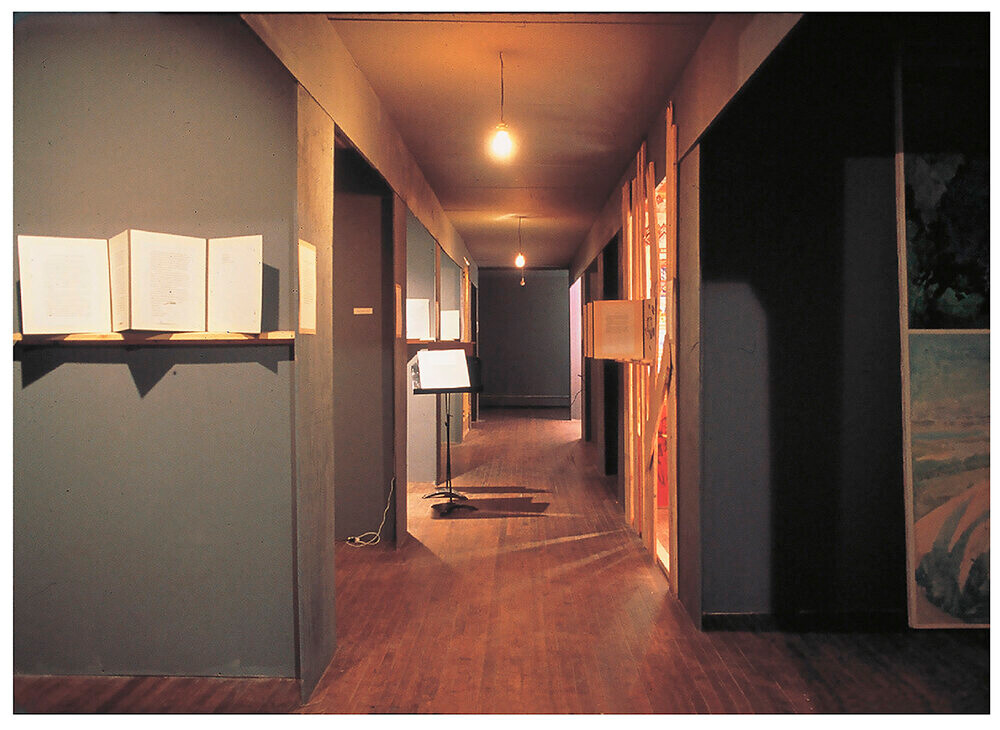
Along with Viktor Pivovarov, Kabakov created a separate art direction – albums. Between 1970-1975, the artist worked on the ‘Ten Characters’ series, the heroes of which - Sitting-in-the-Closet Primakov, the Generous Barmin, Looking-Out-of-the-Window Arkhipov and other inhabitants of a giant communal apartment – try to hide in their private life and escape the surrounding world.
Placing his heroes into the everyday circumstances of a communal apartment, the artist was creating the collective image of Soviet life: “You can’t live in it, but you can’t live in any other way either.” In 1988 at the New York Ronald Feldman Gallery, the walls of the communal apartment appeared: the ‘Ten Characters’ became a total installation. Looking into the rooms, the viewers studied how the Garbage Man, the Untalented Artist and the Man Who Collected the Opinions of Others lived. But they couldn’t see them – all the inhabitants, just like in the albums, had disappeared.

One of the most powerful, by emotional strain, works of Kabakov is ‘My Mother’s Album’. From the memories of his mother, Bertha Solodukhina, typed with a typewriter, and the photos of Zaporozhye and Moscow, the artist created 76 pages of the “Album”, which made up the total installation. In it – life, full of strife, dismay and trials. The journey through the installation is accompanied by the singing of the artist – he performs Russian romance songs. But, when the visitors discover the source of the sound, they struggle to hold back their disappointment: it’s buried in a pile of trash.
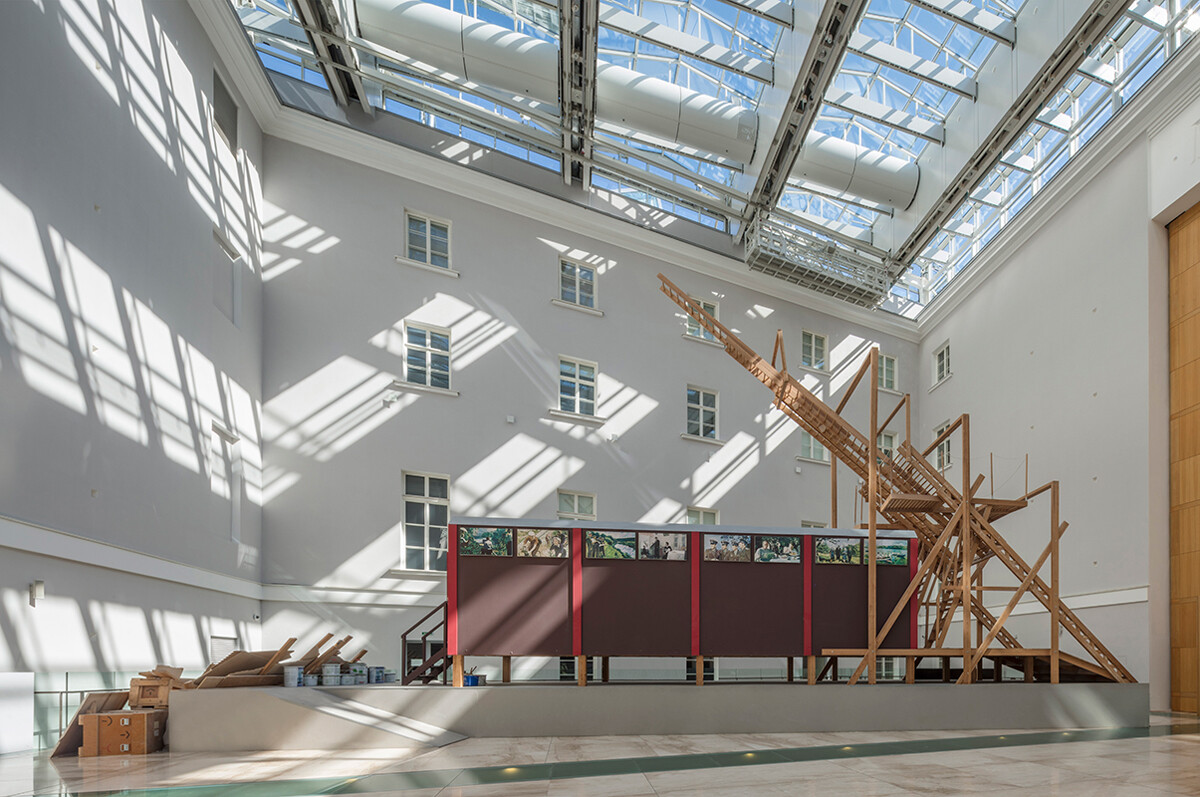
In 1989, Kabakov immigrated to Berlin, where he met Emilia Lekakh and, together, they moved to the U.S. From that point onward they created all their works together, signing them as “Ilya and Emilia Kabakovs”.
Several months before the collapse of the Soviet Union, the artist presented his installation ‘The Red Wagon’ in Dusseldorf – an expression of the Soviet era. The viewers went in by a Constructivist staircase and found themselves inside a space where, with 1930s-1940s music playing, they could study a panorama of a perfect country with blimps, buildings and other structures. At the exit (viewers had to go down via a broken staircase) they were met with the trash left from the building of the wagon.
The journey along the installation was, in its own way, a “walk” through the history of the USSR, from its very beginning to its demise. Several years later, Ilya Kabakov received the Golden Lion of the Venice Biennale for ‘The Red Wagon’. In 2011, the artist gifted the installation to the Hermitage museum in St. Petersburg.
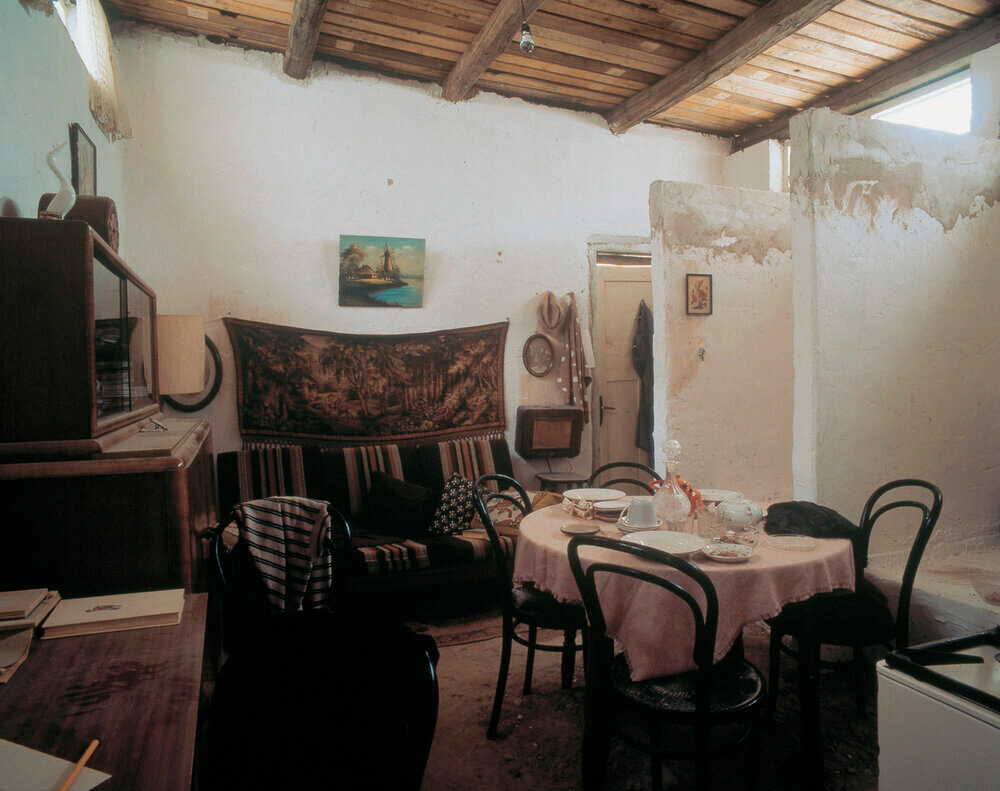
The 1990s were the period of flourishing for the artist: Kabakov’s works were exhibited at the largest art forums and in museums, including the Venice Biennale, in the Centre Pompidou, in New York MoMA. He also participated in the famous Documenta exhibition. Specifically for it, the artist created an installation called ‘The Toilet’. A typical concrete building with the letters ‘М’ and ‘Ж’ (‘M’ and ‘W’) appeared among idyllic Kassel landscapes – but, inside, the visitors were met with an abode with a couch and a carpet on the wall, with a cupboard and a set table. But, it didn’t mean that Soviet people were forced to live in toilets; instead, it meant that both the country, in which a communal lifestyle could combine with the high soar of the soul, and its people don’t exist anymore.
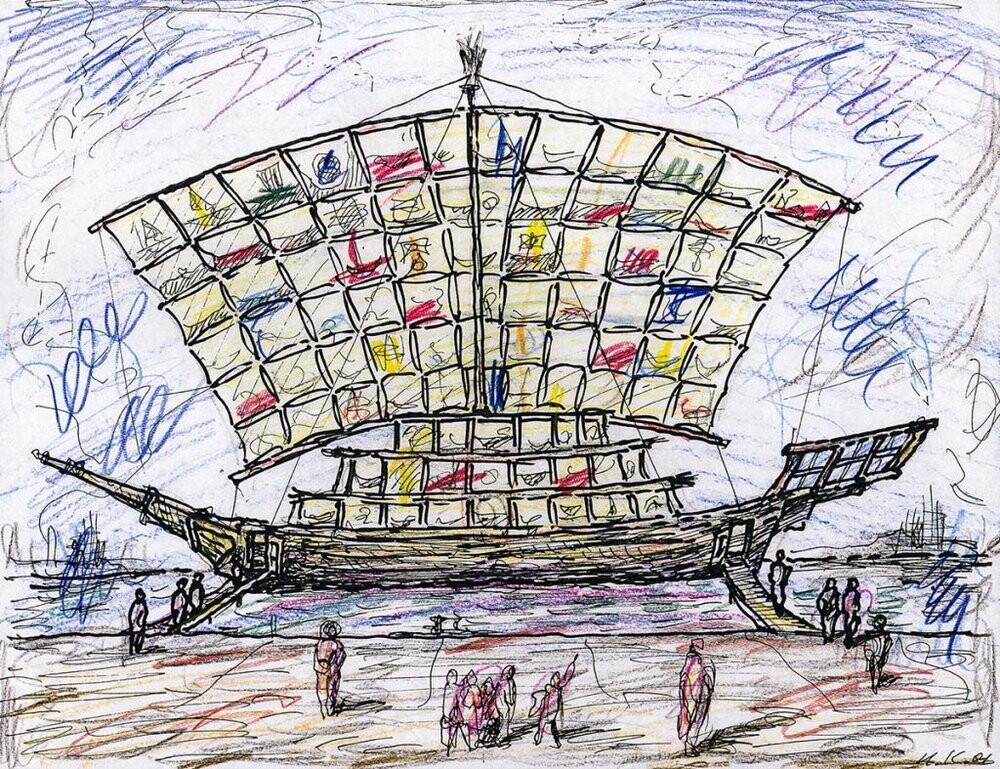
This is one of the longest running projects that has already traveled halfway around the world. Its goal is to teach mutual respect and increase the level of tolerance in the world. Children are involved in the creation of the installation, with which they spend several months discussing issues of acceptance of other cultures. At the same time, the children make drawings, which then become the sails of the “ship”. The first project was realized in 2005 in Egypt in the Siva oasis, where the Berber tribe lives. Then, the “ship” visited Italy, Switzerland, UAE, USA, Cuba and Russia.
Dear readers,
Our website and social media accounts are under threat of being restricted or banned, due to the current circumstances. So, to keep up with our latest content, simply do the following:
If using any of Russia Beyond's content, partly or in full, always provide an active hyperlink to the original material.
Subscribe
to our newsletter!
Get the week's best stories straight to your inbox